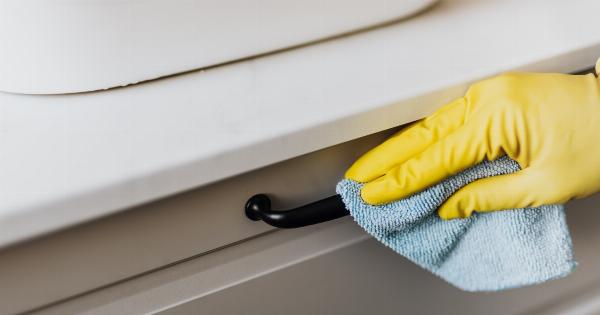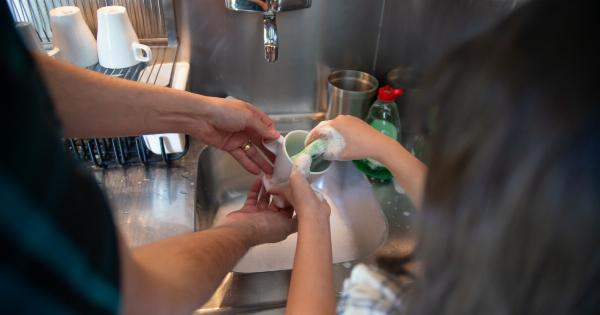Keeping our hands clean and dry is essential for maintaining good hygiene and preventing the spread of infections. While washing hands thoroughly is crucial, drying them properly is equally important.
Improper hand drying methods can reintroduce bacteria to the hands, leaving us vulnerable to infections. In this article, we will explore the best ways to dry hands without risking infection.
1. Paper Towels
Paper towels are commonly found in public restrooms and are considered one of the most effective ways to dry hands. Studies have shown that paper towels can reduce bacterial counts on hands by up to 77%.
The friction caused by rubbing the hands with paper towels helps remove moisture and bacteria from the skin’s surface.
2. Air Dryers
Air dryers are a popular alternative to paper towels in many public spaces. They work by blowing high-speed air onto the hands, evaporating the water.
While air dryers are convenient and environmentally friendly, they might not be as effective as paper towels in completely drying the hands, which can leave residual moisture and bacteria.
3. Hand Dryers with HEPA Filters
Newer models of hand dryers are equipped with high-efficiency particulate air (HEPA) filters that can trap bacteria and other microorganisms from the restroom air before releasing it onto your hands.
These filters help maintain better hand hygiene during the drying process. However, it is important to note that not all hand dryers have HEPA filters, so it is essential to check for this feature.
4. Electric Hand Dryers
Electric hand dryers, which are often found in restrooms, generate warm air to evaporate the moisture on your hands.
While they can effectively dry your hands, it is vital to thoroughly rub your hands together under the machine to ensure that all areas are adequately dried.
5. Microfiber Towels
Microfiber towels are a popular choice for personal hand drying, especially at home. They offer excellent absorption capabilities and are gentle on the skin, making them ideal for regular use.
Microfiber towels can be reused after washing, making them an eco-friendly option to consider.
6. Tissue Papers
If you find yourself without any paper towels or hand dryers, tissue papers can be used as a temporary solution.
While tissue papers are not as effective as paper towels, they can help remove excess moisture from the hands to prevent the growth and spread of bacteria.
7. Hand Towels
Hand towels are commonly used in households and are a convenient option for hand drying. However, it is crucial to ensure that hand towels are regularly washed and dried properly to prevent the accumulation of bacteria.
Single-use hand towels are recommended in public spaces to maintain better hygiene.
8. Avoiding Common Towels
Shared or communal towels, such as those often found in public restrooms, should be avoided whenever possible. These towels can become breeding grounds for bacteria and increase the risk of infection.
It is best to opt for individual drying methods to minimize the spread of bacteria.
9. Patting Dry, Not Rubbing
Regardless of the drying method you choose, it is important to remember that patting dry is more effective than rubbing vigorously.
Patting allows the towel or air to absorb moisture better without causing friction that can damage the skin’s protective barrier.
10. Hand Sanitizer Alternatives
If there are no available hand drying options, you can use hand sanitizers that contain at least 60% alcohol. These sanitizers can effectively kill most bacteria and viruses on your hands.
However, using hand sanitizers as an alternative should be limited to situations where no hand-drying alternatives are available.
Proper hand hygiene, including thorough handwashing and appropriate hand drying techniques, is crucial in preventing the spread of infections.
By choosing the right hand drying methods, such as paper towels or hand dryers with HEPA filters, we can ensure that our hands remain dry and free from harmful bacteria.






























